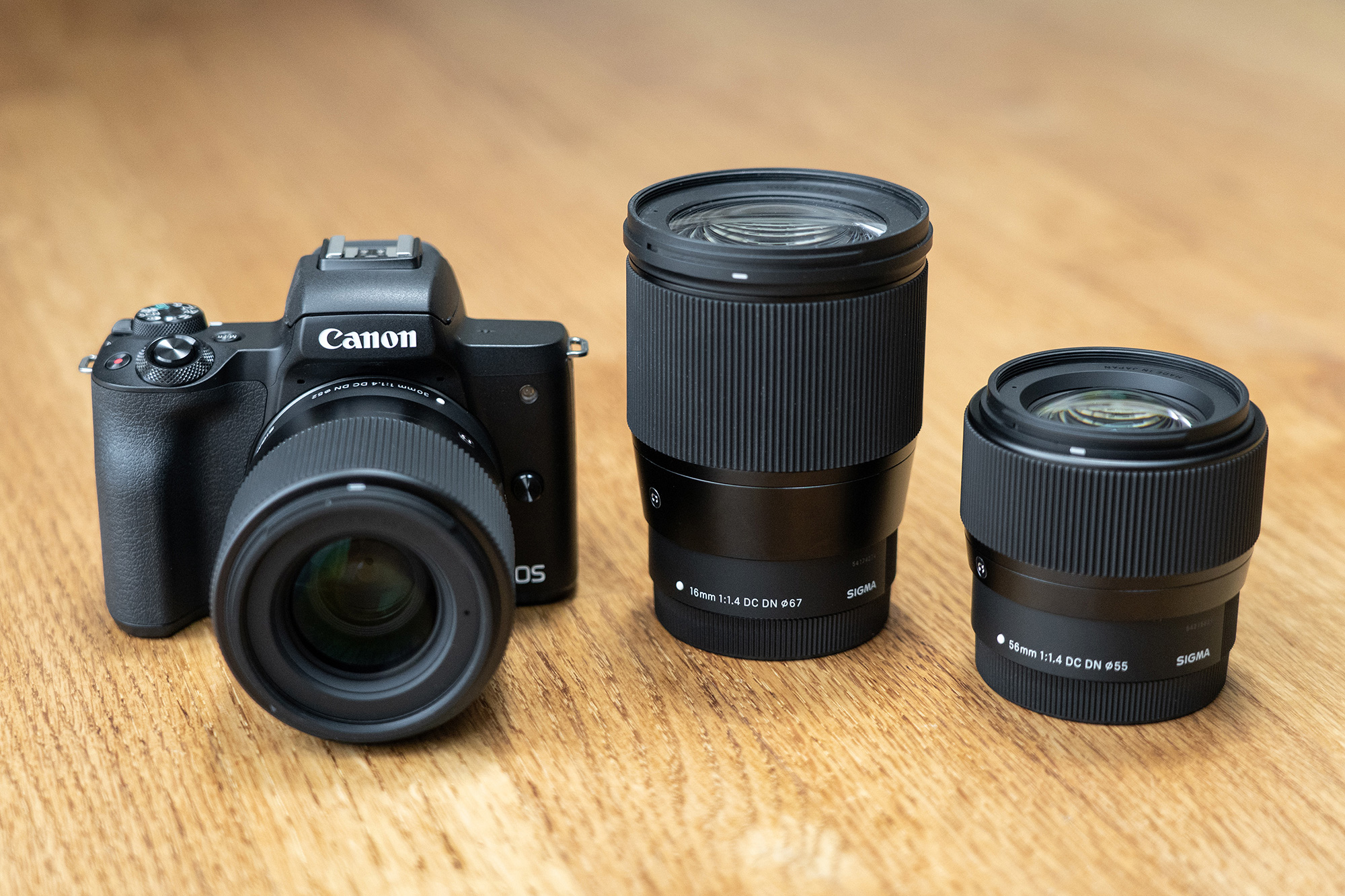
Ever since Canon introduced the EOS M mirrorless camera system in 2012, a small, but growing fan base has been asking SIGMA to craft lenses for this emerging platform.
I, for one, love these little cameras. I own the EOS M50, and it has become my go-to camera for travel, family outings, hiking and casual telephoto work. It’s small, light, comfortable, easy to use, and thanks to the swiveling screen it’s great for group photos and selfies. Autofocus is fast enough for most situations, and the controls are familiar and straightforward. Put simply, it’s a joy to use. But I, and many other fans of this system have been craving compact, fast-aperture primes for the promising EF-M mount that, until now, had yet to surface.
Enter SIGMA and their trio of F1.4 prime lenses! The SIGMA 16mm, 30mm and 56mm F1.4 DC DN | Contemporary (meaning it’s designed for crop-sensor, mirrorless cameras) lenses, which have been quite popular on crop-sensor Sony and Micro Four Thirds systems, are also available for Canon EOS M cameras (UPDATE: and now FUJIFILM X Mount and Nikon Z Mount!).
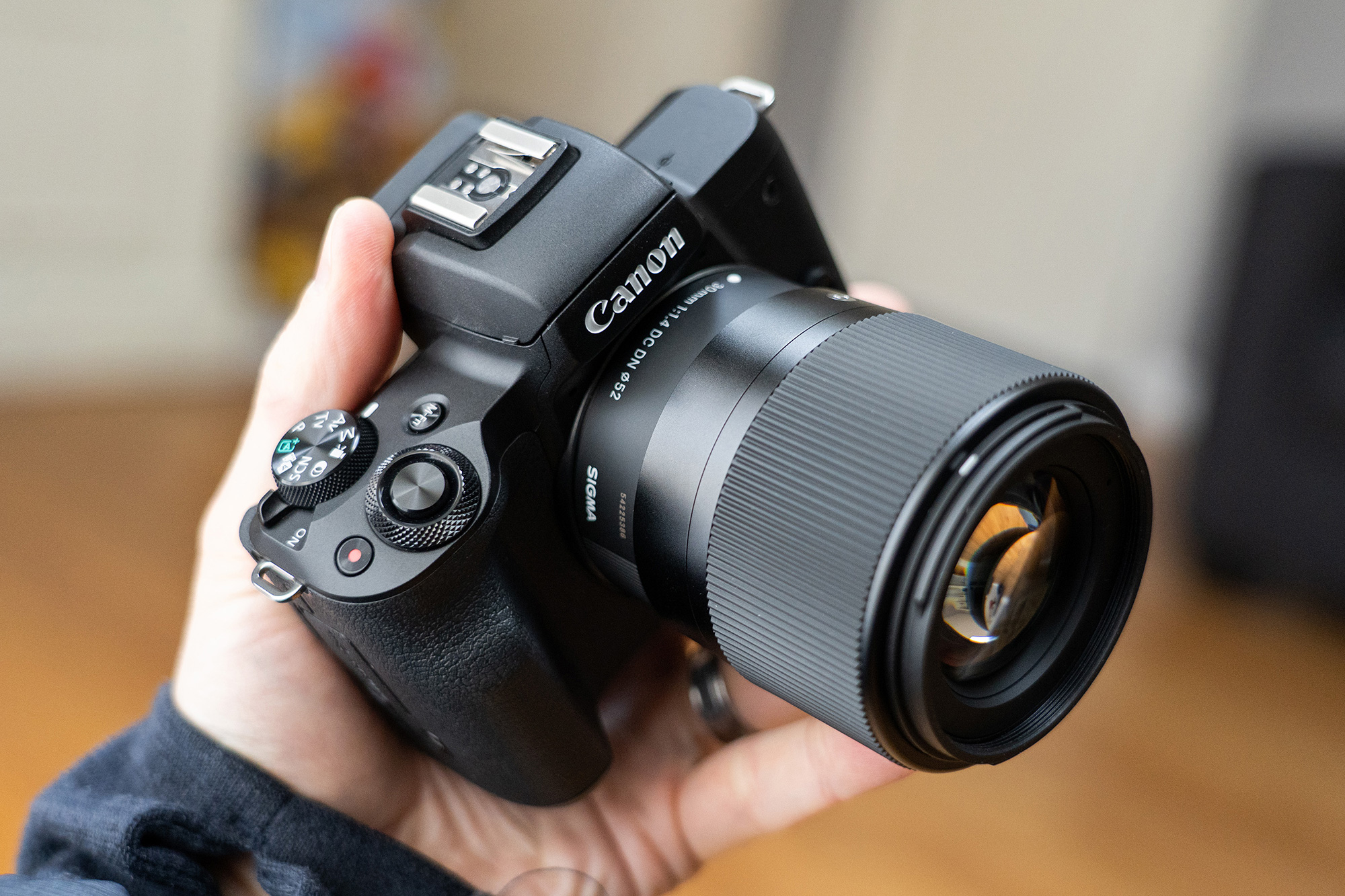
Considering a crop factor of 1.6x, these lenses have equivalent focal lengths of approximately 26mm, 48mm and 90mm when mounted on EOS M cameras, covering your wide, normal and portrait fields of view. Thanks to the wide open maximum aperture, they are incredibly useful in low light situations, helping to keep noise to a minimum (which is frankly a bit of an issue on many existing EOS M models). Not only that, but the lenses offer gorgeous, natural-looking bokeh, and they’re all very reasonably priced.
I recently packed this collection of lenses for a day trip to the New York Botanical Garden Holiday Train Show, in which dozens of carefully-constructed New York City landmarks (made entirely out of natural materials like sticks, leaves and nuts) would be on display alongside festive little electric trains running laps around the venue. In this environment, the super-fast DC DN lenses would be lifesavers since the entire presentation would be sparsely lit by strings of white-ish Christmas lights, a few VERY YELLOW incandescent spotlights, and whatever fleeting daylight that could make its way through the sides of the tent.
16mm F1.4 DC DN | Contemporary
The SIGMA 16mm F1.4 DC DN | Contemporary is the largest lens of the trio, but perhaps the most useful overall, especially in a cramped setting like this, with dozens of people crowding around each section of the exhibit. Thanks to the wide focal length, I was able to snap some very detailed photos of famous NYC buildings in all their woody glory, and in the garden sections of the venue, I could take photos from interesting angles and perspectives. Yes, I could have achieved the same angle of view with my pack-in zoom lens, but with this prime, I could shoot at a much lower f-stop, keeping my ISO as low as possible to avoid the inevitable noise that would usually muddy up the details.
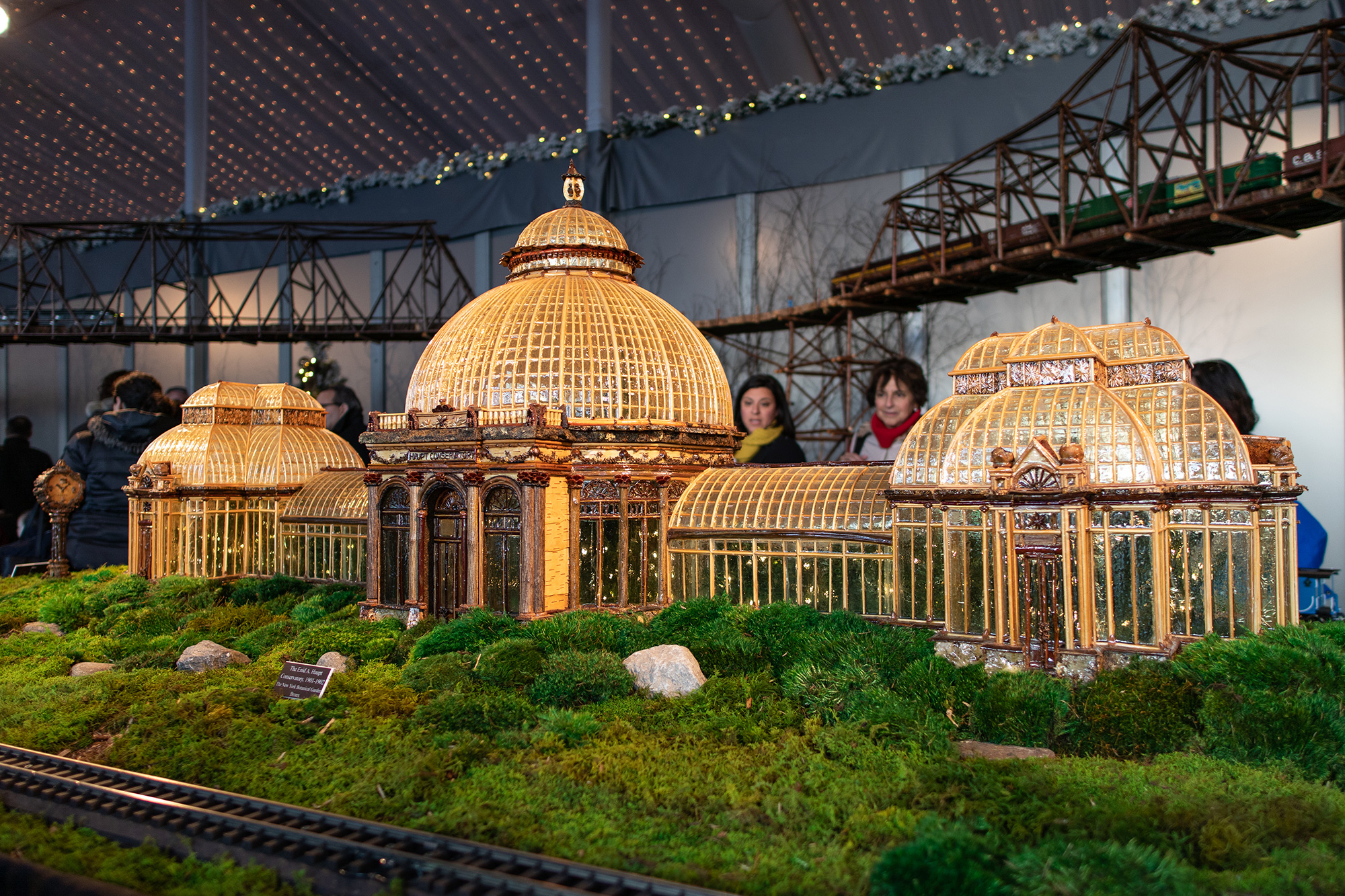
The wide angle of view gave me the ability to fit this very large display into the frame, with excellent detail throughout, while the background was subtly blurred.
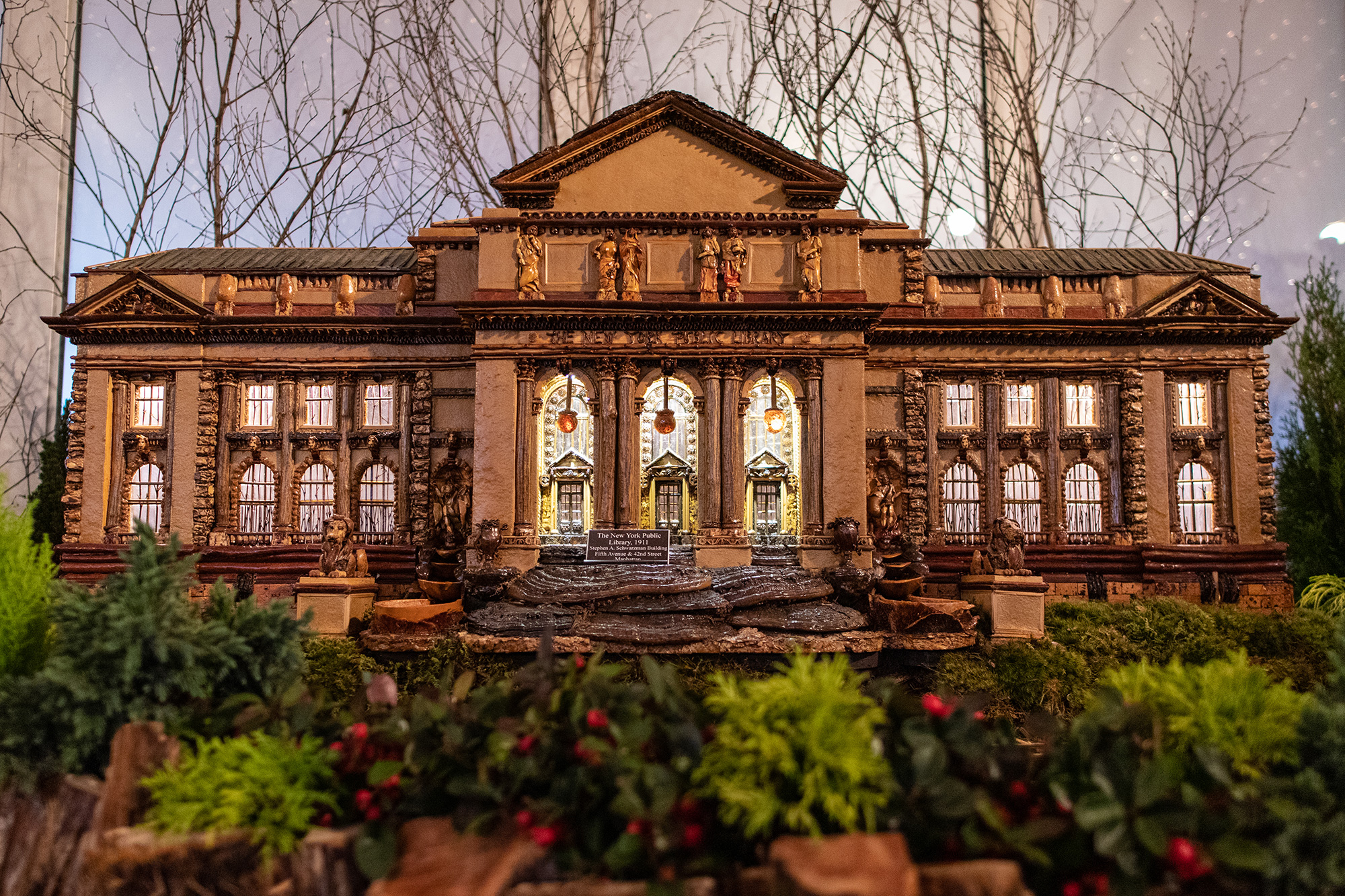
Even when I was pressed up against the track, the 16mm lens offered plenty of working room, and at f/1.4, I had enough light to keep my ISO fairly low and still shoot handheld.
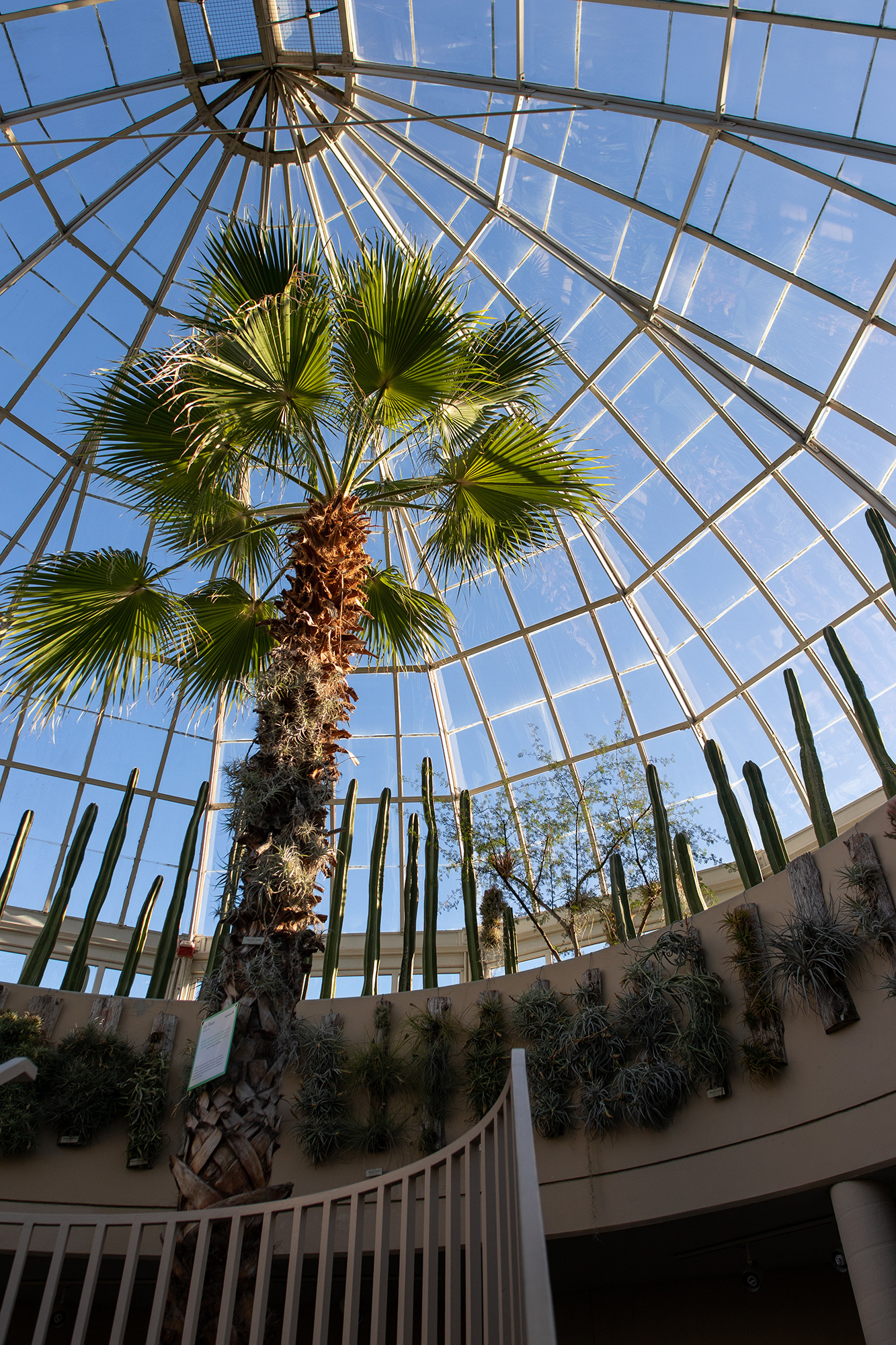
Tight quarters, but I was able to frame up plenty of interesting geometry in this shot inside the desert arboretum.

With a 24mm-equivalent angle of view, I was able to get all this carnivorous-looking plant’s leaves in the shot, plus the shallow depth of field blurred both the plant’s stem and the desert floor, keeping the focus squarely on the center portion.
30mm F1.4 DC DN | Contemporary
I know I literally just wrote that the 16mm was the most useful lens of the three, but with its “normal” equivalent focal length of 48mm, the 30mm F1.4 DC DN | Contemporary was actually attached to my camera most of the time. Sharp, lightweight, and enough background separation at lower f-stops to produce some seriously sweet images, from the train show to the (very humid) gardens. This is the most affordable lens of the three, kind of a “nifty fifty” if you will… a standard focal length that produces natural-looking images, much like the ones shot on every film SLR camera for generations.

Just before entering the show, I snapped a quick candid shot of my son as he looked ahead toward the exhibit (in extremely dim light). While I did have to bring up the shadows quite a bit, this little moment couldn’t have been captured without the wide open aperture of this lens.

From the crisp detail of the fountain to the smoothness of the foreground and background elements, the 30mm captured an image that puts me right back in that extremely humid room (PRO TIP, bring a lens cloth or ten when you go from freezing temperatures into a rainforest dome).
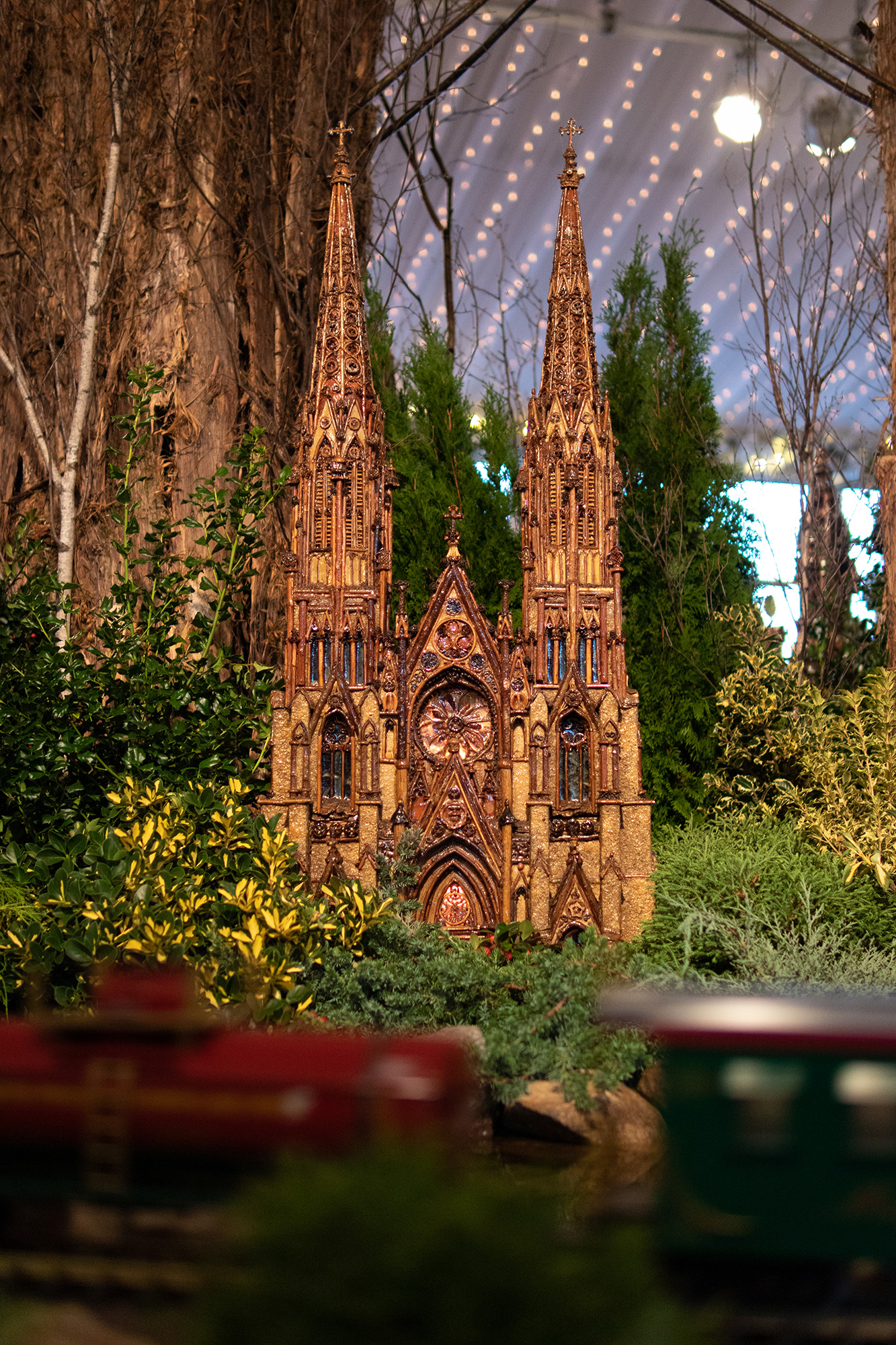
Wide enough to fit the entire cathedral and the passing train cars, narrow enough to keep the surroundings from interfering with the scene. Sometimes the “normal” focal length is just right.
The big difference between this “standard” lens and the bundled primes of old is the amazing close focusing distance of just 11.8 inches, meaning you can shoot closeups, too! This purple lily was just inches away, but it fills the frame with color and detail, and at f/1.4, the background just melts away. This lens is an outstanding value, and a must-have for any EOS M shooter.

Say what you will about pictures of flowers, but if you want your work displayed in perpetuity on office computers the world over, put some in your portfolio! Use your camera’s single-point AF (or manual focus if you dare) and put that shallow depth of field to good use.
56mm F1.4 DC DN | Contemporary
If you’re shooting portraits on an EOS M camera, your lens options are very limited. For that classic, 85mm-or-greater look, you either use the 55-200mm zoom or you adapt a larger EF lens, and neither route is ideal. SIGMA’s 56mm F1.4 DC DN | Contemporary is incredibly compact, razor sharp, and that background blur… MWAAHHH!! This is the type of lens that keeps one from upgrading to a full-frame camera. I really don’t want to oversell it, but you can seriously shoot terrific portraits in virtually any lighting without even trying. Random picture in a greenhouse? BAM! Spur-of-the-moment candid at the kitchen table? KAPOW!! You’ll be shooting your friends’ new profile pictures on a daily basis with this thing.
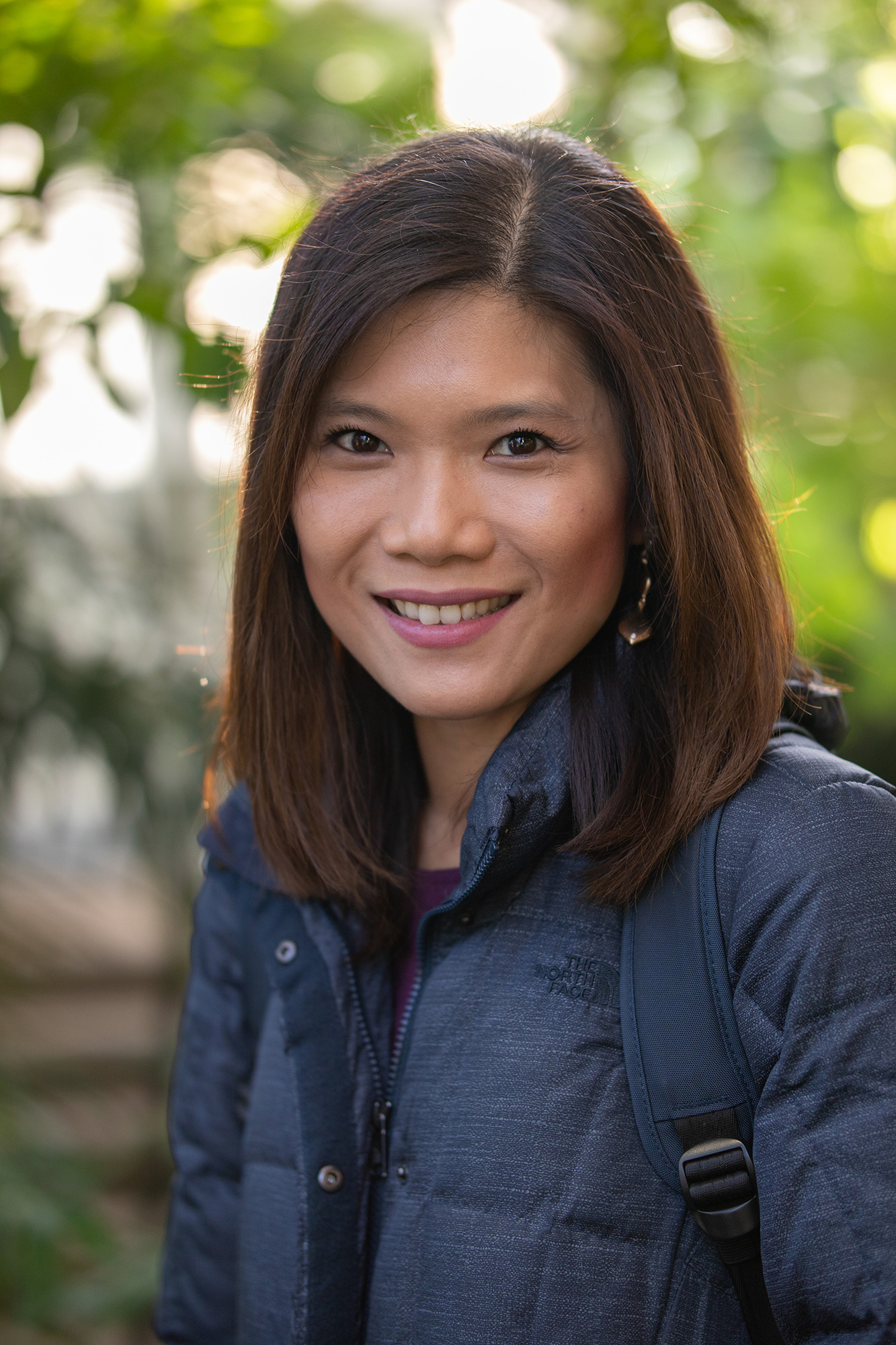
Sharp as a tack where it should be, buttery smooth backgrounds and foregrounds, plus a flattering focal length. The 90mm-equivalent angle of view on this lens is perfect for all sorts of portraits, posed or just out of the blue.

I was technically at a party, but I was still on the job because I brought my 56mm f/1.4 and was asked to take more pictures once they saw the results!
Of course, this focal length also comes in handy to give depth and atmosphere to otherwise static subjects. During the train show, I used the 56mm to capture the details of otherwise overlooked areas, like the clock outside the New York Botanical Garden or the back end of a passing model train.

While my intention was to simply get a lot of background separation in this shot, I was also able to achieve plenty of detail on the clock face without needing to stop down, keeping the photo relatively noise-free.
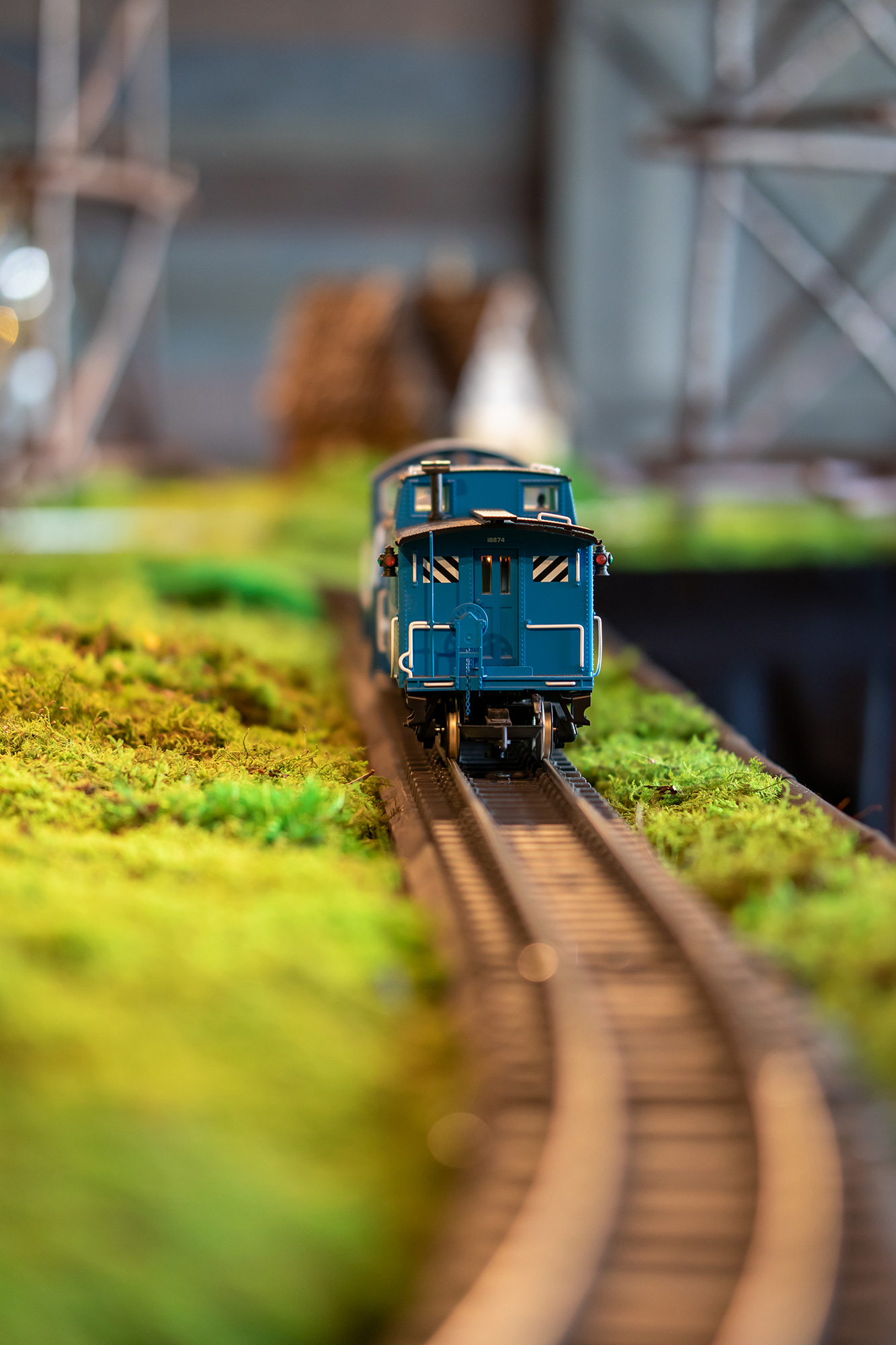
This train was moving along pretty quickly, and without a high enough shutter speed, every shot would have been soft. Thanks to the fast aperture, I was able to get a sharp picture of train while blurring out everything else for a unique, focused viewpoint.
The DC DN F1.4 Trio Overall
Quite honestly, there’s little about these three lenses to complain about. Mounted on EOS M or Sony crop sensor (A6000, A6400, etc.) cameras, they hit those three essential focal lengths that photographers have been relying on for decades. They have an ultra-wide max aperture for use in low light, plus deliciously-smooth bokeh. They’re light enough to carry an entire essential lens set in a single, slim bag. Build quality is exceptional. The manual focusing rings are big, easy-to-grip, and turn smoothly. What’s not to love?
Full disclosure! Yeah… I work for SIGMA. But I’m a photographer first, and these three lenses allow me to create the images I really want on a camera body that, quite frankly, I wasn’t sure about keeping long term. Now, with these compact, quality primes, my little “travel” camera can finally hang with my full-frame gear, and I’ll have a lot more frame-worthy shots to share with my family and friends.
In this case, good things definitely come in threes!
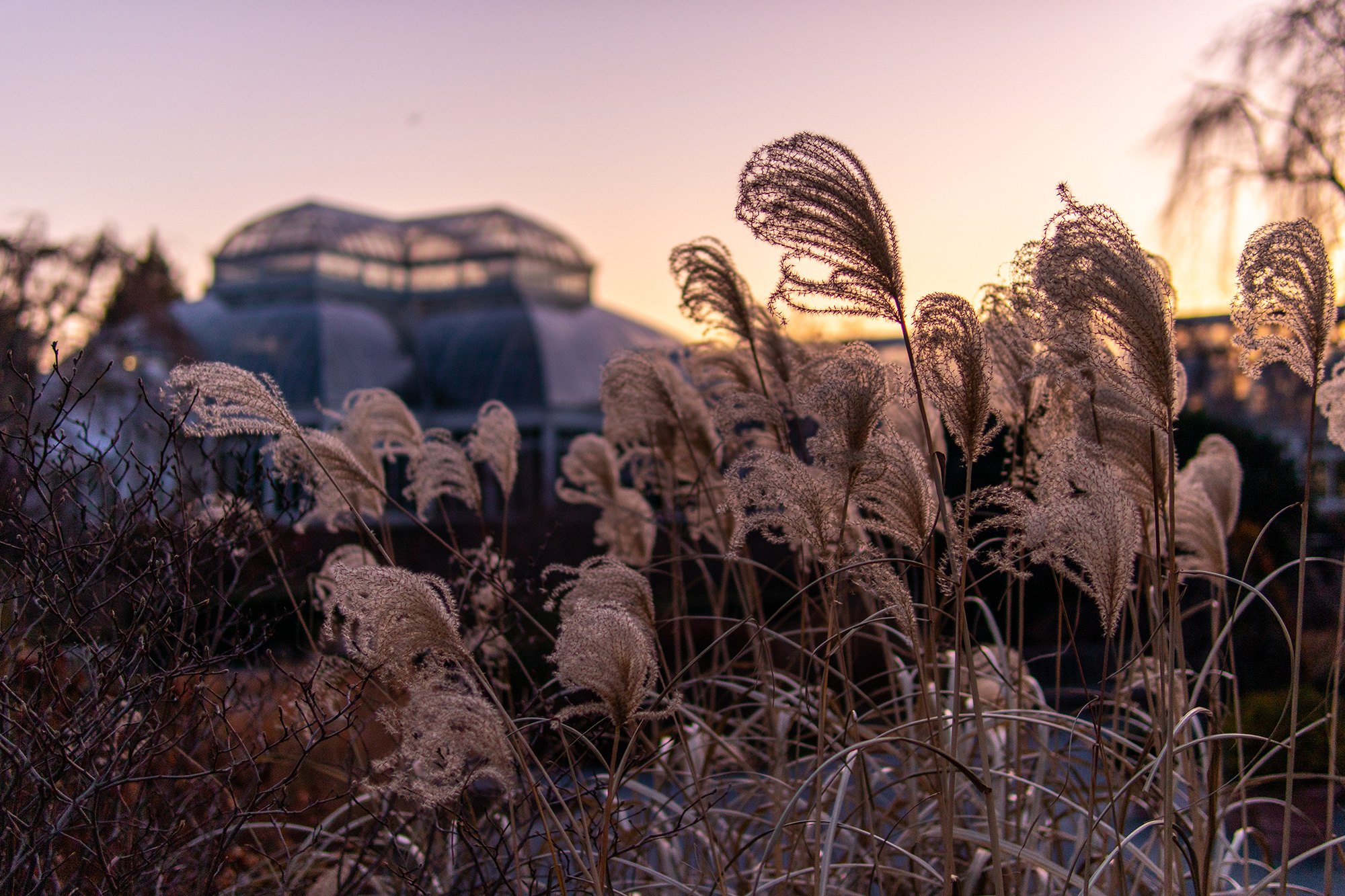
I didn’t know whether to focus on the grass or the building… but with the 30mm f/1.4 attached, I knew either way my subject area would be sharp, even at twilight.

The detail on the roof of this house was easy to capture with this prime lens, which is incredibly sharp despite its affordable price.
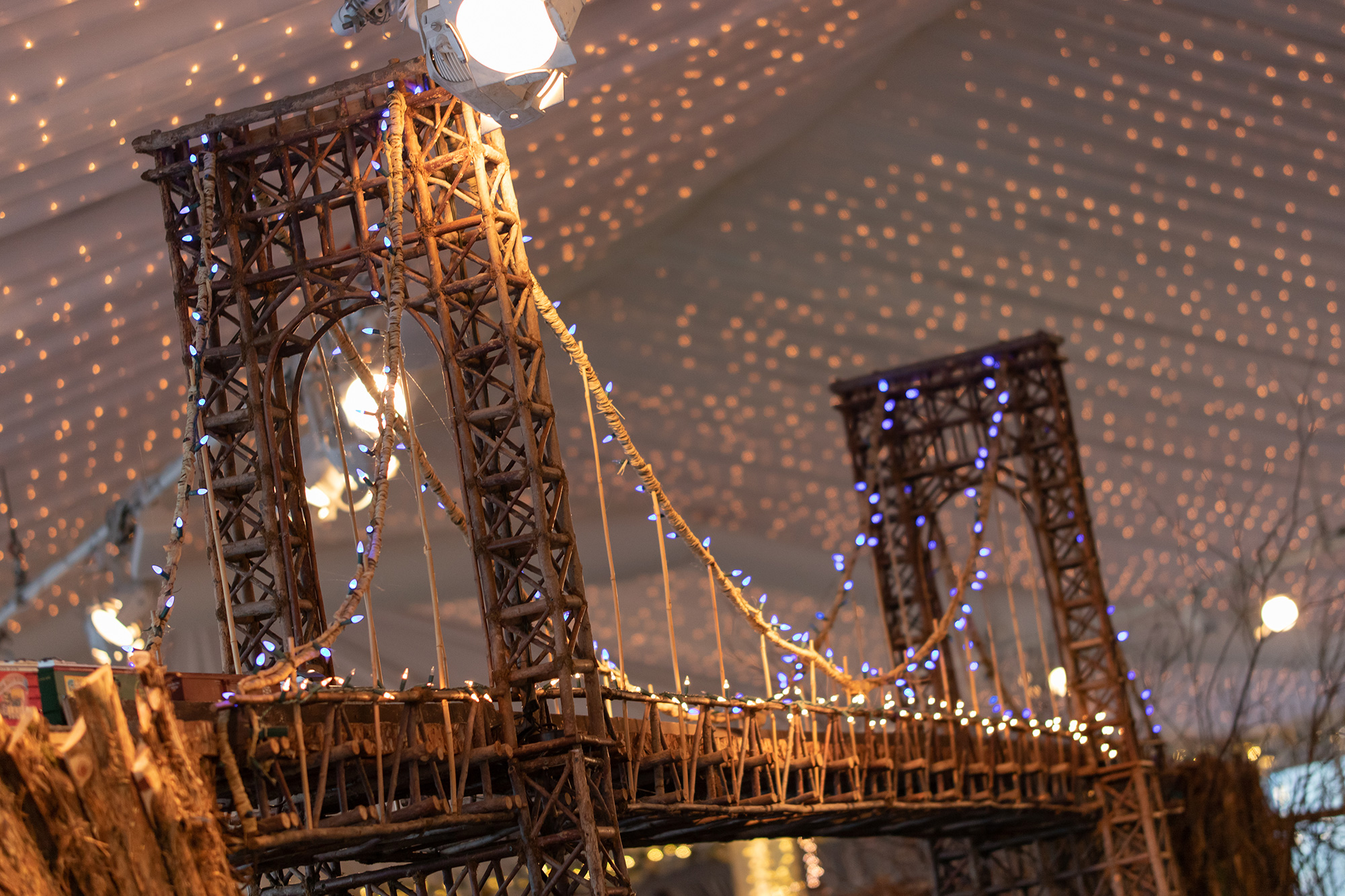
Every New Yorker despises crossing this bridge, but somehow, my SIGMA lens (plus the amazing work of the NYBG) provided a perspective that made it look – dare I say – nice.

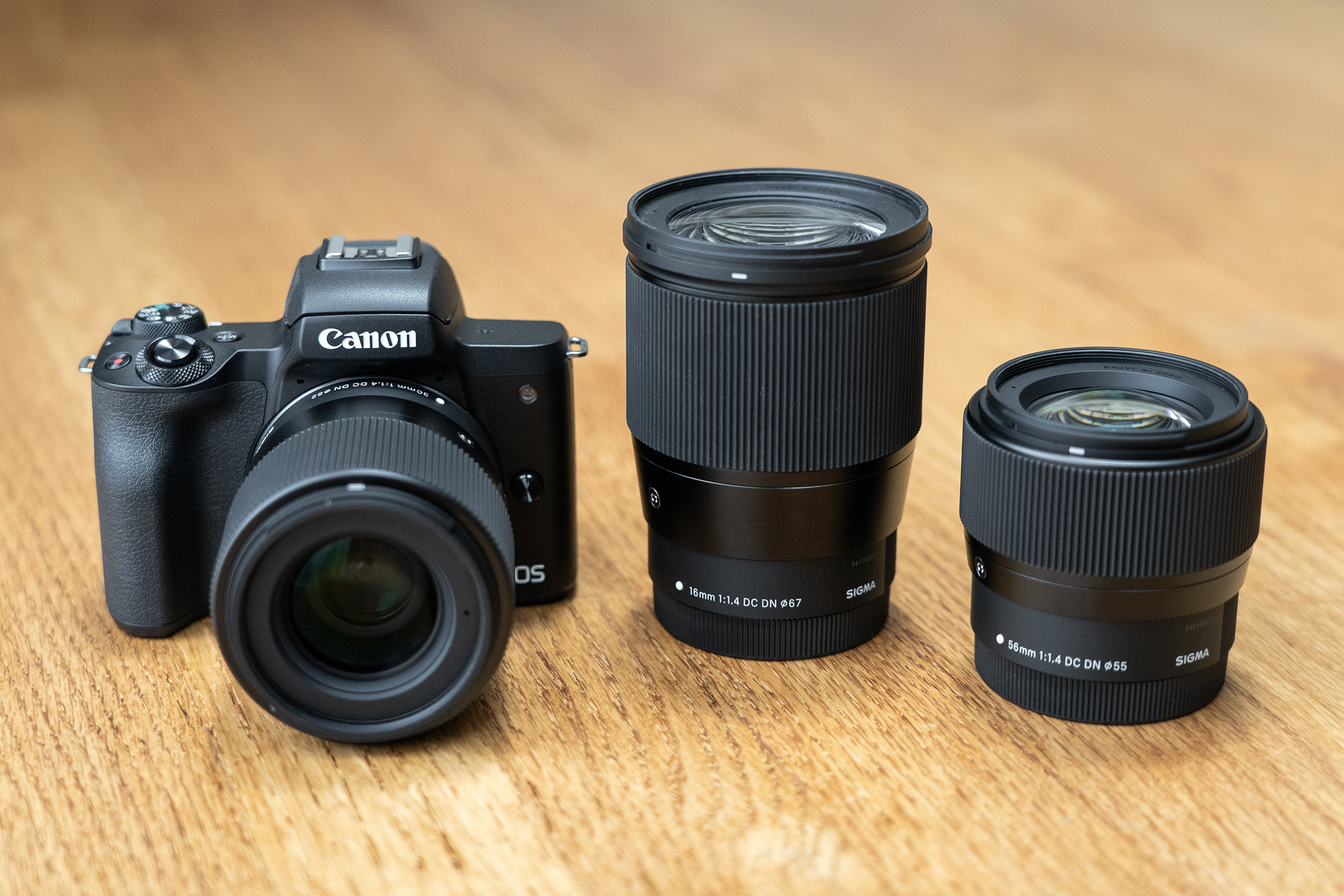
I did go through your article. It gave me idea to choose prime lenses. Could you please help me to choose which prime lens is better for beginners to learn. I bought 16mm sigma prime lens from https://mktradingco.com/brand/sigma will it enough to learn or do i need some other thing to lean. I will look forward to your reply.
Thank You
The 16mm is a great start. With a wide angle lens, you can always fit everything into the frame. When you want to change the look of your images, try a longer focal length — I love the 56mm!
I read somewhere that Sigma will convert one of their lenses to Canon M mount free of charge. I have an 18-250 in Canon ef mount that I really like. Will that work?
Jerry, our mount conversion service only applies to lenses that are also available for the mount you are switching to. For example, we can convert a 16mm F1.4 for Sony E to Canon EF-M. However, this service would still require a fee.
If you want to use an EF-mount lens on your EOS M camera, please use Canon’s “Mount Adapter EF-EOS M” which works seamlessly with Sigma EF-mount lenses.
Hi – I just got my Sigma 16mm F1.4 DC DN today for my Canon M50 but for some reason its not focusing. I have the latest firmware update but can’t determine the issue. Is there a setting on my camera that I need to set for the lens? Thanks!
Hey James,
It’s really easy to switch the M50 over to manual focus mode, just by pressing the left side of the multi-selector button on the back. If that’s not it, try remounting the lens. Turn off the camera, take off the lens, remount, and turn back on. And check the electrical contacts on your camera to see if they’re clean. There are no special settings are firmware updates you need to make the lens compatible. It should be good to go right out of the box, so if you’re still having issues, please contact info@sigmaphoto.com or give us a call and we’ll try to help.
Thanks Nick. Tried everything you mentioned and nothing worked. It seems that the manual focus on the lens itself may not be working. I turn it and it doesn’t do anything, just makes a clicking sound. I tried calling earlier but tech support was already closed. I shot an email so hopefully we can get this thing figured out.
I have the 30mm and 56mm for my Canon M6 mk2. They are outstanding! I plan to get the 16mm soon and hope to see more of these amazing primes for the M mount in 2021!
The 16mm is so versatile! You will love it.